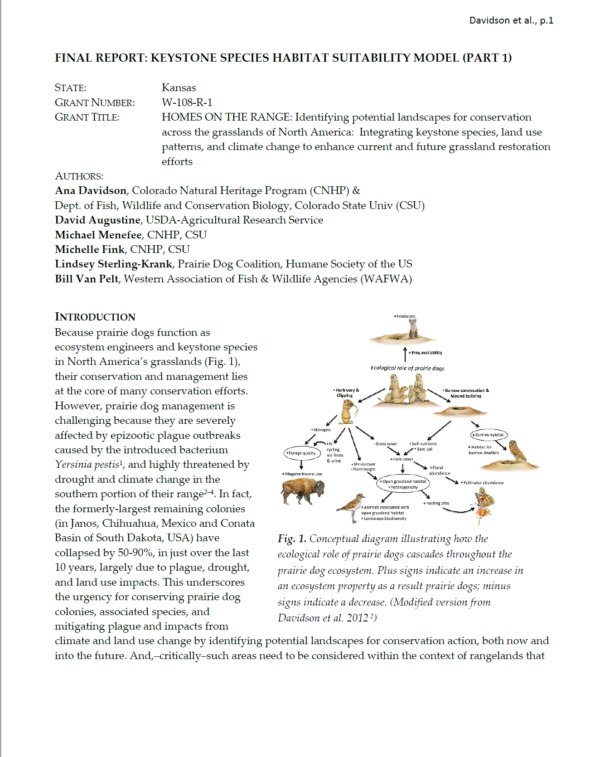- Version
- Download 939
- File Size 1.93 MB
- File Count 1
- Create Date May 24, 2022
- Last Updated June 9, 2023
KEYSTONE SPECIES HABITAT SUITABILITY MODEL (PART 1)
Because prairie dogs function as ecosystem engineers and keystone species in North America’s grasslands (Fig. 1), their conservation and management lies at the core of many conservation efforts. However, prairie dog management is challenging because they are severely affected by epizootic plague outbreaks caused by the introduced bacterium Yersinia pestis1, and highly threatened by drought and climate change in the southern portion of their range2–4. In fact, the formerly-largest remaining colonies (in Janos, Chihuahua, Mexico and Conata Basin of South Dakota, USA) have collapsed by 50-90%, in just over the last 10 years, largely due to plague, drought, and land use impacts. This underscores the urgency for conserving prairie dog colonies, associated species, and mitigating plague and impacts from climate and land use change by identifying potential landscapes for conservation action, both now and into the future. And,–critically–such areas need to be considered within the context of rangelands that...
Attached Files
| File | Action |
|---|---|
| Final Results BTPD HSM Report 5-18-22.pdf | Download |
